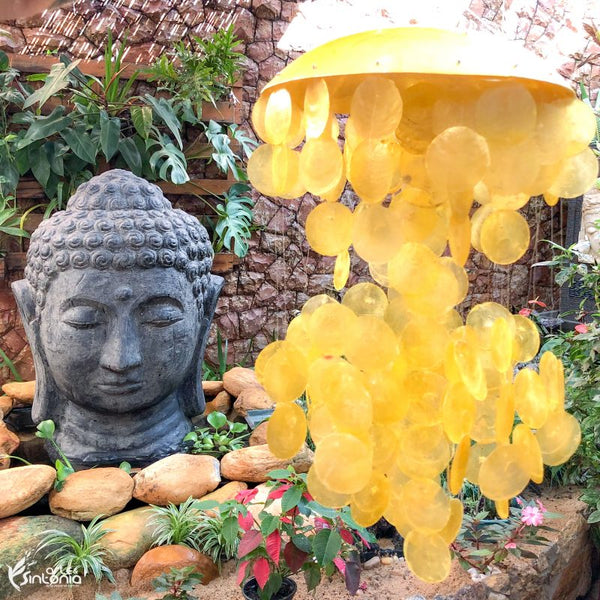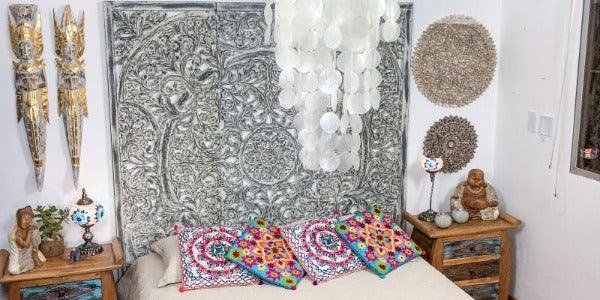The iridescent shine of nacre or mother-of-pearl is without a doubt one of the greatest attractions of this natural material, whose classic style combined with timelessness make it a dazzling element to cover art in decoration . Whatever the piece, when decorated with mother-of-pearl , it is enriched with the unparalleled luminosity of the pearly finish, making it a naturally luxurious item.
From mother-of-pearl with rough aspects that escapes patterns and reminds us of the freshness of a shell by the sea, passing through polished and transformed into a blade, to smooth and delicate surfaces worthy of jewels: regardless of the form it takes to contemplate decorative arts , mother-of- pearl adds texture with originality and contrasts with other materials, giving a charming aesthetic to the environment.

Mother-of-pearl has a unique luminosity that makes art naturally luxurious.
This pearly treasure formed by a set of minerals secreted by molluscs such as abalone and which surrounds the inside of their shells has not always had its natural nobility appreciated. Throughout history shellfish farming oysters and pearls were considered valuable raw materials while nacre was reduced to a by-product.
The use of mother-of-pearl in the decorative arts originates in the Near East with the discovery of historical artifacts from the Bronze Age in Sumerian tombs made of wood, ivory and bones with inlays of this organic gem. The multicolored effect added to the resistance and delicacy were essential to spread it in China , India , Thailand and Turkey - the latter peaking in the Ottoman Empire.

Nacre is formed by a group of minerals creating an iridescent texture in the shells.
Turkish inlaid furniture, Indonesian Feng Shui mobiles , Indian pendants , Filipino vases , trimmings, architecture and jewelry have been embellished over the centuries with mother-of-pearl and the unique textures provided by pure coloring, whose designs create movement in the pieces. No piece of nacre is the same as another, making the material authentic and special. Its sustainable quality, as it is a renewable material reused from other manufactures, is another great attraction that adds value to the product.
The geographical setting with numerous islands and favorable temperature for the development of shells made the Philippines one of the largest producers and exporters of mother-of-pearl arts . Another intrinsic value is the possibility of dyeing pieces produced in fresh water or using variations of natural tones such as pink, pearly white, black, gray and pewter from nacre grown in salt water.

The variation in water used in shell cultivation influences the color of mother-of-pearl.
Although refinement may suggest fragility, mother-of-pearl is a resistant material, after all its original function was to protect molluscs submerged in the sea. For this reason, in addition to its luminous quality, by capturing and reflecting light in an enchanting way, its durability contributes to being a versatile material in decoration , covering decorative vases , encrusted in boxes , trays and picture frames , structuring candle holders , giving sound to wind lords or still radiating lighting from chandeliers .
The essence of mother-of-pearl also brings with it energies that transcend its materiality. Like most materials of marine origin, it has a strong connection with the emotional, psychic sensitivity and intuition. The transforming energy of water makes it purify the environment, protecting it from negative energies.

Resistance and refinement make mother-of-pearl a versatile material for decoration.
Decorative arts with mother-of-pearl display in an elegant and timeless way the luxury created by nature, only perfected by man. Contemplate the natural art that covers the decorations in our virtual store !
Namaste!
Milene Sousa - Art & Tune














